Baldur's Gate 3 mixes Divinity's excess with old school BioWare magic
Life of the party.
It was roundabout the time I restarted the game in fury that I decided I absolutely love Baldur's Gate 3. Larian's take on BioWare's genre-defining Dungeons & Dragons adaptation is every bit as vibrant, engrossing and startling as you'd expect from the minds behind Divinity: Original Sin 2. It's both modern in its dialogue presentation and exquisitely throwback - every blow, conversational ploy or feat of sorcery governed by the fateful rattle of on-screen dice. It's steeped in '90s BioWare HUD trappings but always feels like a Larian joint, with quests and turn-based clashes that reward thinking outside the box to an almost game-breaking degree. It boasts the developer's usual diorama-esque level design plus crisp, colourful writing that channels the immensities of D&D's lore without sinking into impenetrability. The only major problem I have with Baldur's Gate 3, the expected Early Access bugs aside, is that it isn't the full thing. So why did I up and start a new save, a few hours in?
Pure petulance is the answer, but let's circle back to that. In the scrappy build I hurried through over the weekend, the game's six preset characters were locked off, obliging me to cook up an adventurer of my own from a generous selection of races, classes and vocations. Whether sculpted by the player or the developer, all major characters in Baldur's Gate 3 begin with the same objective: to remove the alien tadpole stuffed into your head by a tentacle monster called a Mind Flayer during an unplanned stay aboard a giant octopod airship. Left to its own devices, the tadpole will eventually transform you into a Mind Flayer yourself. In the meantime, it endows you with various... advantages, including the ability to sense and read the minds of those similarly afflicted.
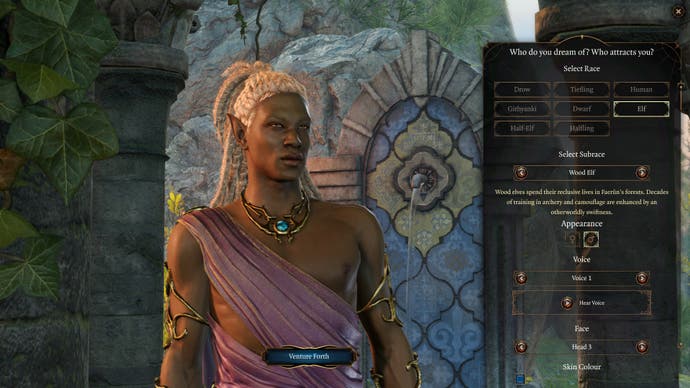
Returning Baldur's Gate players will know what it's like to have something evil lurking behind your eyes, and this feels like the foundation for an entertaining yarn. It certainly makes for a hectic opening, like an accelerated version of the second game's dungeon prologue. Long story short, the airship is attacked by dragons, performs some ill-advised warp jumps and winds up in one of D&D's nine Hells, forcing you to cut down flocks of bat demons as you search for an escape route. Having crash-landed back in the mortal plane, you emerge blinking into an equatorial seaside wilderness and begin your search for a healer, scooping up the other major cast members as you go. Nearby attractions include goblin warrens, mossy tombs, druid circles guarded by half-demonic Tieflings, mysterious cults and somewhere in the distance, the dreaming towers of Baldur's Gate itself.
My initial character, Saucepan, had plenty on her mind besides eldritch parasites. As one of the accursed cave-dwelling Drow elves, she would meet with fear and suspicion everywhere - but it would be Saucepan's solemn duty, as a reformed "Seldarine" Drow, to overcome negative preconceptions and prove herself a friend to the surface dwellers. Being a cleric in service to the moon goddess Selune, she might also face aggro from worshippers of the night goddess Shar. To counter these threats, I'd armed her with some vicious illusion magics to complement her default class healing powers and race-born proficiency with a rapier. Saucepan's adversaries wouldn't always be found on the battlefield, of course, so to top things off I gave her the Guild Artisan vocation, making her both more persuasive and better able to see through lies.
She was, dare I say, a pretty eccentric creation: a sort of moon-touched holy fencer, with the ability to conjure doppelgangers and charm the socks off racists in conversation. I congratulated myself on my originality and verve. But then I met Shadowheart, one of the major story characters - also of elven ancestry, also a cleric of the Trickery domain, with stats more or less identical to mine. Was poor Saucepan going to spend the next hundred hours journeying alongside some interloper with the same basic skillset? I was appalled - and quietly glad of the excuse to start over and take another swing at the game's handsome character editor. This time, I opted for a Drow ranger character called Teapot. Teapot lacks Saucepan's social nous and magical aptitude, but she can summon crabs and ravens to distract people while she's shooting them to pieces. I have a feeling she'll go far. Providing she doesn't befriend any other animal-summoning Drow rangers, anyway.
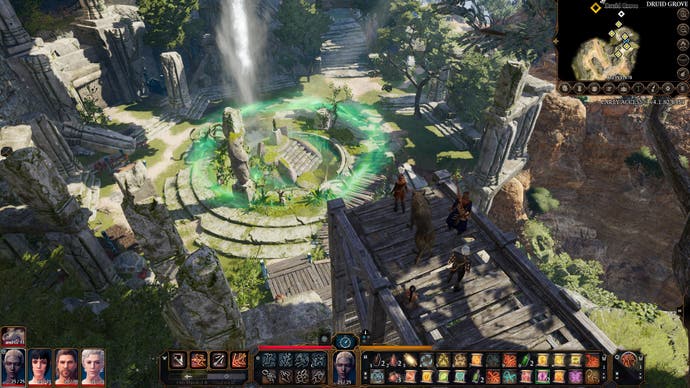
You might call beginning afresh with a deadline looming reckless, but playing through the game's opening stretches again proved useful - it revealed to me just how much flexibility there is to Baldur's Gate 3, a game whose love of improvisation is matched only by its love of nasty surprises. The options in character creation appear to be amply reciprocated by the range of outcomes in quests and combat, though only time (a lot of time) will tell whether this is as vast and variable a game as Original Sin 2.
To give you an indication, here's a brief list of things I did as Saucepan compared to what I accomplished as Teapot: 1) recruited a talking brain to my party after prising it from somebody's skull 2) punched the brain to dogfood after failing to do so, nipping an entire side story in the bud. 1) Massacred some tomb-robbers by kicking them off walls into a patch of enchanted vines 2) scared the robbers away by baring my teeth at them. 1) Turned a woman into a Mind Flayer by pushing the wrong button (because I lacked the arcane insight to decipher the writing on it) 2) electrified a man after pushing a different wrong button. 1) Put my head in a wounded Mind Flayer's mouth after succumbing to its telepathy 2) ordered my pet crab to pinch said Mind Flayer to death while it was trapped under rubble.
Beyond all that, I have slain Worgs with lightning bolts, and flooded caverns with grease to slow down walking skeletons while ransacking a sarcophagus. I've intervened in druidic squabbles which threaten to shatter the fragile peace of a settlement that already has problems enough in the shape of goblin raiders. I've struck pacts with devils and used a necromancer's necklace to interrogate a murdered guard. I've roused the disapproval of my entire party by suggesting that we take on a sidequest while searching for a means of de-flaying ourselves. I've looked on complacently as my vampire pal, Astorian, sneaks around our campsite at night (nothing to fret about there, I'm sure).

Last but not least, I've tried and failed to resurrect my wizard chum Gale by following instructions delivered by a kind of spectral ansaphone, under threat of some unspecified catastrophe. While doing this I managed to get a magic flute wedged up my nose, dooming my character to eternity on a dialogue screen - I'm reasonably confident that last bit is a bug of some kind, but Larian's taste for absurdity makes it hard to be certain. If you find yourself similarly inconvenienced, I suggest switching to another party member and giving the paralysed character a shove to break the spell (just try not to do this near any enchanted vines). Switching between characters to game the situation is one of the darker arts of a Larian RPG - as in Original Sin 2, you can have some characters exploring freely while others are bogged down in turn-based combat, letting you "suspend" the encounter and drop the free-roaming character into the proceedings from an unguarded angle.
The combat system - which is based on the most recent incarnation of the D&D ruleset - feels just as intricate but less chaotic than Divinity's. Rather than having everything you do draw from a single action pool, character turns are split between movement up to a certain range and spending points to perform attacks, spells and so on. This makes for more spread-out encounters than in Larian's previous game, as characters can gallop all over without sacrificing the opportunity to act. You can also pick from a set of free generic "bonus" actions each turn: sneaking, jumping, dashing, shoving, throwing objects (I once started a brawl by hurling a wheel of cheese), dipping weapons in substances such as fire, and most importantly of all, helping KO'd party members to their feet before they bleed out.
The spells and abilities themselves are all D&D-derived, which means that elements, combos and terrain effects are less of a feature than in the Divinity games. If you're a Baldur's Gate devotee you'll probably welcome this, because Original Sin 2's love of environment-based chain reactions was, quite frankly, insane: you'd take a swing at somebody with your staff and simultaneously blow up, poison and freeze everybody in the corridor behind you. There are status effects and AOE spells aplenty in Baldur's Gate 3 but surfaces are a lot less volatile, and skirmishes much calmer for it.
The combat is packed with options but has a clean-cut old school feel, with familiar questions of positioning and class strengths/weaknesses settling around your shoulders like a nice, cosy Cloak of Protection. Shadowheart, the trickster-cleric, is best kept in the middle where she can sabotage people with illusions and heal allies. Creepy Astorian is best off pouncing on distant spell-casters and archers. New abilities arrive thick and fast - by levels two or three, most classes should have unlocked a subclass, extra spell slots and passive traits of some kind - and fights are sufficiently spaced-out (in my experience, anyway) that you should have new toys to try out whenever you get into hot water.
Whatever you're up against in Baldur's Gate 3, your real enemies are the dice. You'll throw the bones every time you attempt anything significant in the game, be it spotting a wall trap, defusing an argument or putting a rampaging monster to sleep. Sometimes these dice checks happen automatically - watch for the diamond sign over a character's head - and sometimes you perform them yourself, left-clicking to spin up a gleaming red D20. Higher character stats skew the odds in your favour, but there's always a chance you might slip up - and correspondingly, a chance you'll roll a fluke 20 and breeze through a situation your character isn't equipped for. It's a reminder of how arbitrary RPGs once felt, before they learned to hide their complex clockwork. It's also provocatively at odds with Larian's efforts to make Baldur's Gate walk and talk like a cinematic action game, with lengthy cutscenes and Mass-Effect-style camerawork in dialogue.
As you've hopefully gathered by now, Baldur's Gate 3 has the makings of a classic in more senses than one. It has a firm grip on the atmosphere and camaraderie of BioWare's 90s epics, while introducing enough of Larian's house style to be a distinctive creation. There are a couple of features I miss, such as D&D's old moral alignment system - a clunkier element of the BioWare games, but one I'd have liked Larian and license owner Wizards to rediscover and elaborate upon. Then again, exploring the differences between eras in CRPG design is part of the fascination here. Alas, switching over to the public Early Access build means I'm going to have to say goodbye to both Saucepan and Teapot, but you can rest assured I'll be spending many hours in this long-lost corner of the Forgotten Realms as the winter goes on.
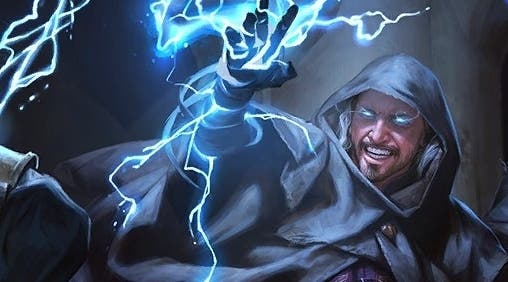




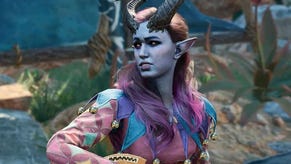

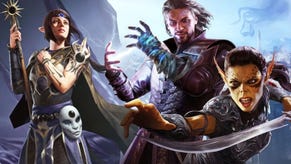
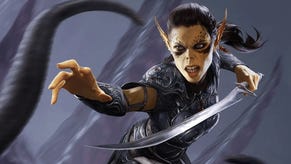


.png?width=291&height=164&fit=crop&quality=80&format=jpg&auto=webp)




.jpg?width=291&height=164&fit=crop&quality=80&format=jpg&auto=webp)
